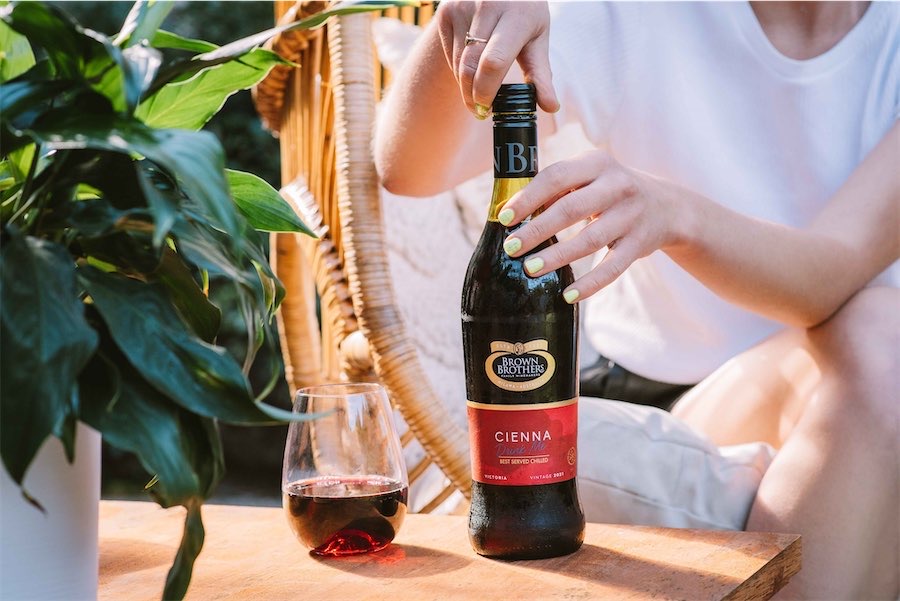
“With most wines, a challenge with the process of removing alcohol is the loss of much of its essence: the flavour, aroma, balance and mouthfeel. This is because the alcohol tends to carry a lot of the flavour,” writes wine writer RICHARD CALVER.
AT lunch at the Tathra Hotel a friend said she had given up drinking wine, other than the occasional glass of non-alcoholic or low-alcohol wine.

Giving up the drink had, she said, greatly improved her health; she felt less tired, more energised. I asked her whether the reduced-alcohol wine tasted okay.
Her reply was that low-alcohol prosecco tasted a lot like regular prosecco. Ahh, I said: “Sweet and full of bubbles.”
From the get-go with this wine variety, my taste says that the complexity and natural interest is absent in the original so the modified version is even less appealing.
There was also a De Bortoli wine that was spoken of: Fizzero, a non-alcoholic drink combining sparkling fermented grape juice blended with green tea. Yeah, but no.
With most wines, a challenge with the process of removing alcohol from wine is the loss of much of its essence: the flavour, aroma, balance and mouthfeel. This is because the alcohol tends to carry a lot of the flavour.
But despite that issue, the popularity of low or no-alcohol wine is set to grow. Its growth will come from the increasing number of people who are teetotallers, especially the young, and not just because of the health concerns of old farts like most of my friends.
Young people are increasingly turning away from alcohol. In this context I found a study by UK charity Drinkaware, which revealed a trend among the UK’s Generation Z (individuals born between the mid-1990s and the mid-2010s.): one in five young adults, or 21 per cent , are now teetotal, a 7 per cent increase since 2017.
In this country, the Australian Institute of Health and Welfare 2019 National Drug Strategy Household Survey showed 0.9 per cent of 15 to 24-year-olds drank daily (the lowest of any age group), 21.4 per cent drank weekly (also the lowest of any age group) and 18.8 per cent drank less than monthly (the highest of any age group).
So, the next step down this path of exploration was to see if there was a low-alcohol wine that suited my tastes.
I tried the Brown Brothers Cienna Zero, a light red wine that is best served chilled, made with circa 0.5 per cent alcohol. Cienna is a wine unique to Brown Brothers; a varietal that has been cultivated from the Spanish grape Sumoll, and the red wine grape cabernet sauvignon.
It was awarded the Gold Medal in the alternative drinks category at the recent 2023 International Wine & Spirits competition. I tried it with my daughter (she squeaks into the Gen Z category) who summed up what both of us thought: “It’s a pretty good summer drink that would go well with raspberries and cream. It needs to be chilled given the way it is so sweet with a strong blackberry flavour. It’s certainly got flavour despite the alcohol being removed.”
The process Brown Brothers uses helps retain the wine’s flavour. Brown Brothers has created its Zero range using spinning-cone technology to remove the alcohol. In essence, stainless steel columns are used in a form of low-temperature vacuum steam distillation to extract volatile chemicals from the wine.
Brown Brothers winemaker Katherine Brown is reported as saying that the spinning-cone technology process leaves a trace amount of alcohol (0.5 per cent ), helping to closely mimic the alcoholic drinking experience (I presume that’s drinking with the alcohol in rather than drinking like an alcoholic).
“I spent so much time at ‘rock bottom’ that I was charged rent for staying there.” –DC Hyden, The Sober Addict
Who can be trusted?
In a world of spin and confusion, there’s never been a more important time to support independent journalism in Canberra.
If you trust our work online and want to enforce the power of independent voices, I invite you to make a small contribution.
Every dollar of support is invested back into our journalism to help keep citynews.com.au strong and free.
Thank you,
Ian Meikle, editor




Leave a Reply